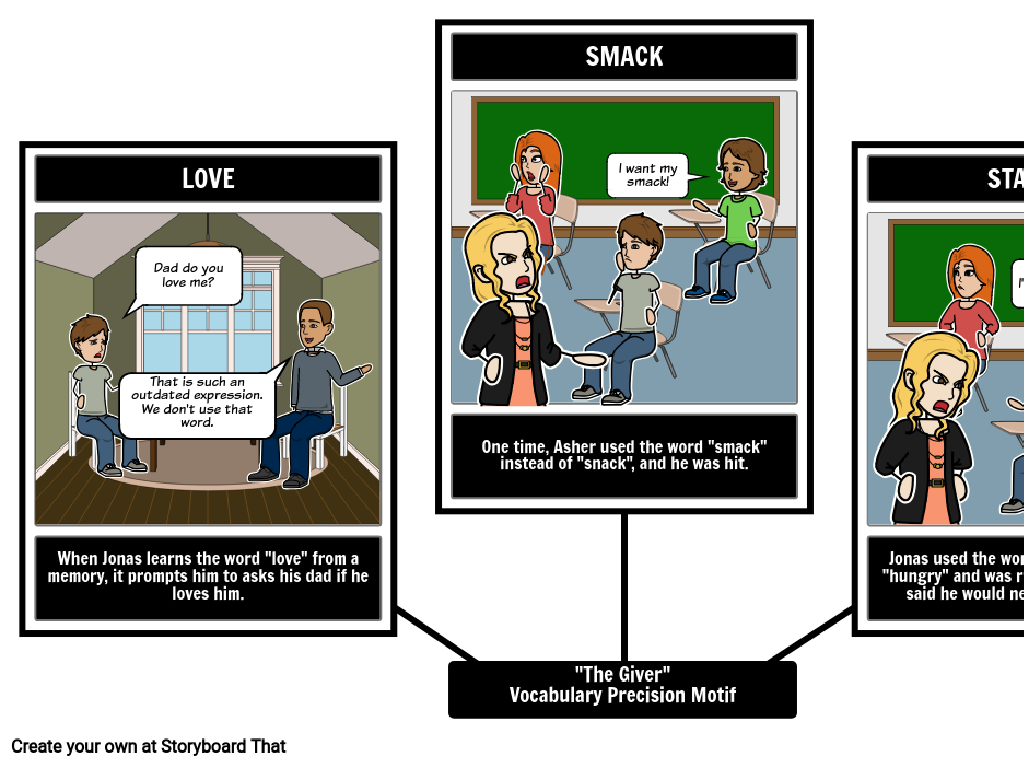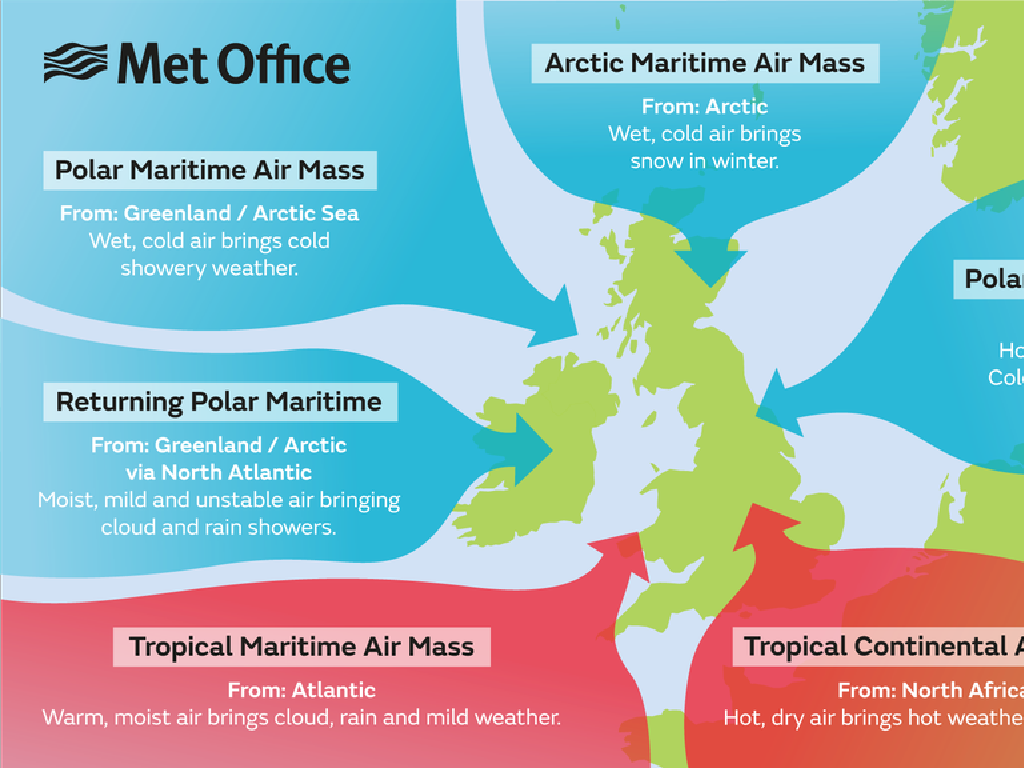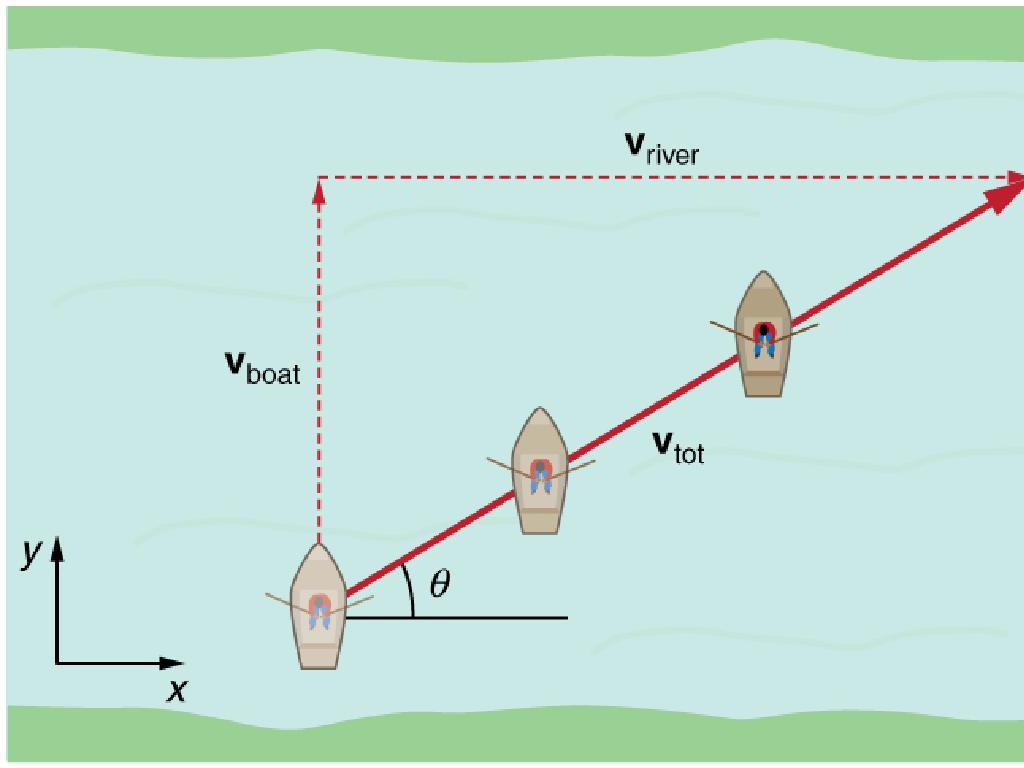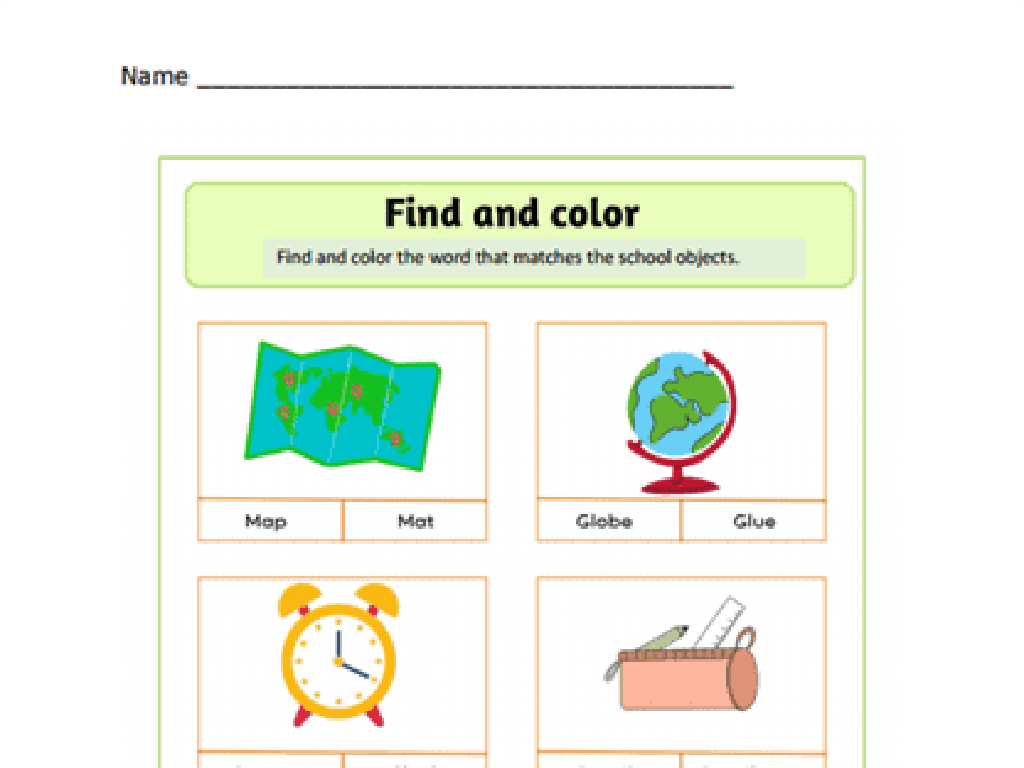Factors Affecting Climate: Latitude
Subject: Science
Grade: Seventh grade
Topic: Weather And Climate
Please LOG IN to download the presentation. Access is available to registered users only.
View More Content
Latitude’s Impact on Climate
– Weather vs. Climate
– Weather is day-to-day, climate is long-term patterns
– Latitude defines climate zones
– Latitude: distance from equator affects temperature
– Sun’s angle changes with latitude
– Sun’s rays hit directly at equator, slanting towards poles
– Equator: warmer climate
|
This slide introduces the concept of how latitude affects climate, which is part of the broader topic of weather and climate. Begin by explaining the difference between weather (short-term atmospheric conditions) and climate (average weather patterns over a long period). Emphasize that latitude, or the distance from the equator, is a key factor in determining a region’s climate. The angle at which the sun’s rays hit the Earth changes with latitude, leading to varying temperatures and climate zones. The equator receives direct sunlight year-round, resulting in a consistently warmer climate. Encourage students to think about how the climate changes as one moves from the equator towards the poles and the implications this has on the environment and human activities.
Understanding Latitude in Climate
– Define latitude
– Latitude is a geographic coordinate that specifies north-south position.
– Latitude lines description
– Imaginary lines parallel to the Equator, measuring distance north or south.
– Latitude: Equator & Tropics
– Equator at 0°, Tropic of Cancer at 23.5°N, Tropic of Capricorn at 23.5°S.
– Latitude: Arctic & Antarctic
– Arctic Circle at 66.5°N, Antarctic Circle at 66.5°S.
|
Latitude is a key factor in determining climate as it influences the angle of the sun’s rays hitting the Earth. Begin by defining latitude and explaining how these lines are used to measure distances north and south of the Equator. Provide examples of significant lines of latitude, such as the Equator, which receives the most direct sunlight, leading to warmer climates. The Tropics are known for their warm weather, while the Arctic and Antarctic Circles mark the boundaries of the polar climates. Encourage students to think about how the climate changes as one moves from the Equator to the poles and the role latitude plays in this variation.
Latitude’s Effect on Climate
– Latitude impacts sunlight angle
– Closer to equator, sunlight hits earth more directly
– Direct vs. indirect sunlight
– Direct sunlight is warmer, indirect is cooler
– Sunlight varies with seasons
– Higher latitudes experience greater seasonal variation
– Latitude influences climate
|
This slide aims to explain how latitude affects the climate by altering the angle at which sunlight reaches the Earth. Students should understand that the closer a place is to the equator, the more direct the sunlight is, resulting in warmer temperatures. Conversely, locations at higher latitudes receive sunlight at a more oblique angle, leading to cooler climates. Seasonal changes are also more pronounced at higher latitudes, where the difference in sunlight angle and duration can lead to extreme temperature variations. Emphasize the importance of latitude in determining not just the climate of a region, but also its ecosystems and weather patterns. Provide examples such as the tropical climate at the equator versus the polar climate at the poles.
Climate Zones and Latitude
– Earth’s diverse climate zones
– Tropical, temperate, polar zones
– Characteristics of climate zones
– Temperature, precipitation patterns
– Locations exemplifying each zone
– Tropical: Amazon; Polar: Antarctica
– Latitude’s role in climate
– Distance from equator affects climate
|
This slide introduces students to the concept of climate zones, which are distinct regions on Earth with specific climate characteristics. The three main climate zones are tropical, temperate, and polar, each with unique temperature and precipitation patterns. For example, the tropical zone is known for its warm temperatures and high rainfall, while the polar zone is characterized by cold temperatures and low precipitation. Students will learn how latitude, or the distance from the equator, influences the climate of a region. Examples of locations in each climate zone are provided to help students visualize and understand the differences. Encourage students to think about how the climate in these zones affects the life and landscape found there.
Latitude’s Impact on Climate
– Latitude’s role in temperature
– Closer to equator = warmer; closer to poles = colder
– Equator vs. Poles: A comparison
– Equator: hot year-round; Poles: extreme cold, less sunlight
– Latitude and precipitation patterns
– Tropics receive more rain; subtropics are drier
– Reasons for dry or wet latitudes
– Ocean currents, landforms affect moisture distribution
|
This slide explores how latitude affects climate, focusing on temperature and precipitation. Latitude is a key factor in determining climate, with areas near the equator experiencing warmer temperatures due to direct sunlight, while the poles receive less sunlight, resulting in colder temperatures. Students should understand the concept of the Earth’s tilt and its revolution around the sun as reasons for these temperature differences. Case studies comparing the equator and the poles can illustrate these concepts vividly. Additionally, the slide will discuss why certain latitudes receive more precipitation than others, including the role of ocean currents and landforms in moisture distribution. Encourage students to think about how these factors influence the climate where they live and in other parts of the world.
Class Activity: Latitude and Climate Exploration
– Group research on climate zones
– Each group gets a latitude range
– Discuss climate characteristics
– Consider factors like temperature, precipitation, and seasons
– Present an example location
– Find a city or region in your latitude range and explore its climate
|
This group activity is designed to help students understand the relationship between latitude and climate. Divide the class into small groups and assign each a specific latitude range. Each group will research the climate characteristics typical of their assigned latitude, such as average temperatures, rainfall, and seasonal changes. They will then prepare a short presentation on their findings, including an example of a specific location within their latitude range. Encourage students to use reliable sources for their research and to think creatively about how to present their information. Possible activities could include creating posters, slideshows, or even role-playing as meteorologists reporting on the climate of their assigned region. This activity will help students to collaborate, research, and communicate effectively.
Latitude’s Impact on Climate: Summary
– Recap: Latitude influences climate
– Closer to equator = warmer; poles = colder
– Climate understanding aids environmental awareness
– Knowing climate patterns helps protect our planet
– Preview: How altitude affects climate
– Next, we’ll explore climate changes with elevation
– Encourage questions on today’s lesson
|
This slide aims to summarize the key points from the lesson on how latitude affects climate, emphasizing the warmer climates near the equator and colder ones near the poles due to the angle of the sun’s rays. Highlight the importance of understanding these concepts for environmental awareness and the role students can play in conservation efforts. Give a brief introduction to the next lesson on altitude, preparing them for how elevation can also influence climate. Encourage students to ask any lingering questions they might have from today’s lesson to ensure a solid understanding before moving forward.






